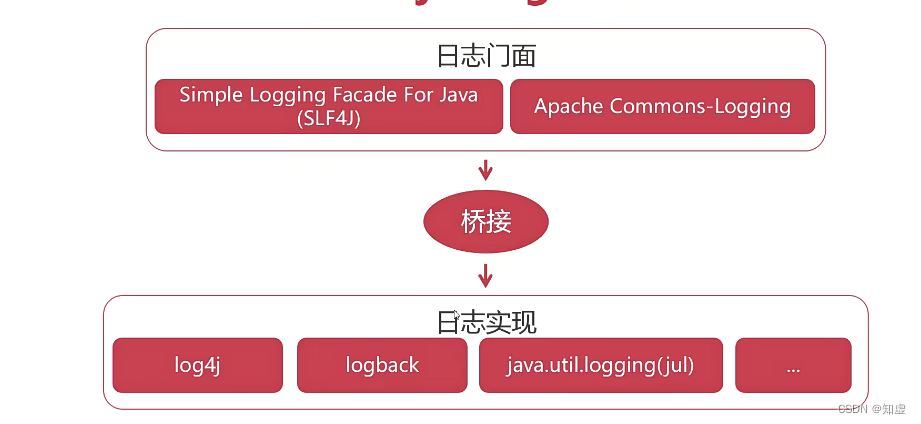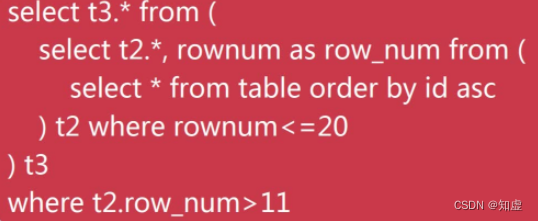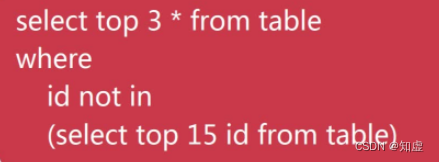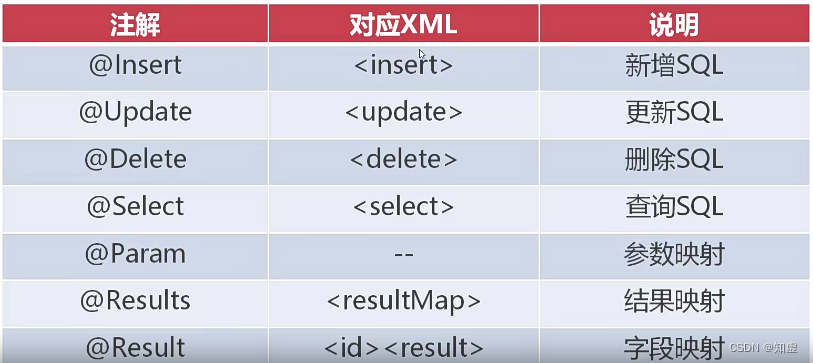Mybatis高级特性
MyBatis日志管理
什么是日志
- 日志文件是用于记录系统操作时间的记录文件或者文件集合
- 日志保存历史数据,是诊断问题以及理解系统活动的重要依据
SLF4J与Logback

首先在代码中配置logback的日志信息
- pom中添加slf4j的依赖
<dependency>
<groupId>ch.qos.logback</groupId>
<artifactId>logback-classic</artifactId>
<version>1.2.3</version>
</dependency>
2.resource下新增配置文件logback.xml:
<?xml version="1.0" encoding="UTF-8" ?>
<configuration >
<!--appender代表 输出器/追加器,用于说明在何处进行日志输出 class固定指向 ConsoleAppender用意是向控制台打印日志输出 -->
<appender name="console" class="ch.qos.logback.core.ConsoleAppender">
<!-- encoder 代表编码 -->
<encoder>
<!--表示日志输出格式 %d{HH:mm:ss.sss}:时间到毫秒 ; [%thread]:线程名; %-5level :日志级别 -5代表按5字符右对齐 %logger{36} :说明是哪个类产生的日志; %msg%n :具体内容+换行-->
<pattern> %d{HH:mm:ss.sss} [%thread] %-5level %logger{256} -%msg%n</pattern>
</encoder>
</appender>
<!-- level 有五个备选值,日志输出级别(优先值从高到低)
error:错误-系统错误日志
warn:警告-存在风险或者使用不当的日志
info:一般性消息
debugger:程序内部用于调试信息
trace:程序运行的跟踪信息
-->
<root level ="debug">
<appender-ref ref ="console"/>
</root>
</configuration>
效果如下:

MyBatis动态SQL
应用场景:

动态SQL
- 动态SQL是根据参数数据动态组织SQL的技术

下面给出一个动态SQL的示例:
<select id="dynamicSQL" parameterType="java.util.Map" resultType="com.imooc.mybatis.entity.Goods">
select * from t_goods
<where>
<if test="categoryId != null">
and category_id =#{categoryId}
</if>
<if test="currentPrice != null">
and current_price <![CDATA[<]]> #{currentPrice}
</if>
</where>
</select>
```
测试类:
```java
@Test
public void testDynamicSQL() {
SqlSession sqlSession = null;
try {
Map param = new HashMap();
param.put("categoryId", 44);
param.put("currentPrice", 500);
sqlSession = MyBatisUtils.openSession();
// 返回表示插入成功的记录条数
List<Goods> list = sqlSession.selectList("goods.dynamicSQL", param);
for (Goods good : list) {
System.out.println(good.toString());
}
} catch (Exception e) {
if (sqlSession != null) {
sqlSession.rollback();
}
e.printStackTrace();
} finally {
MyBatisUtils.closeSession(sqlSession);
}
}
MyBatis二级缓存
- 一级缓存默认开启,缓存范围SqlSession回话
- 二级缓存手动开启,属于范围Mapper Namespace
缓存的范围
一级缓存存放在当前sqlsession中,当会话结束时,缓存被清空,可能使用率不高,还会浪费内存。
二级缓存属于整个Namespace,存储在红色区域的数据会被所有sqlsession共享。

二级缓存运行规则
- 二级缓存开启后默认所有查询均使用缓存
- 写操作commit后对该namespace缓存强制清空
- 配置useCache=false可以不适用缓存
- 配置flushCache=true表示强制清空缓存
下面给出一个示例演示一级缓存 和二级缓存
xml:
<!-- cache这行是开启二级缓存的语句,eviction="LRU"是缓存策略,flushInterval="600000"是缓存时间 size="512"是缓存最大个数 readOnly="true"表示缓存只读-->
<cache eviction="LRU" flushInterval="600000" size="512" readOnly="true"/>
<select id="selectAll" resultType="com.imooc.mybatis.entity.Goods">
SELECT *
FROM t_goods
ORDER BY goods_id
DESC LIMIT 10
</select>
<select id="selectById" parameterType="Integer" resultType="com.imooc.mybatis.entity.Goods">
SELECT *
FROM t_goods
WHERE goods_id = #{value}
</select>
一级缓存(默认开启的就是一级缓存)
测试代码LV1:
@Test
public void testLv1Cache(){
SqlSession sqlSession = null;
try {
sqlSession = MyBatisUtils.openSession();
// 语句执行了两次,但是sql只执行了一次
Goods goods = sqlSession.selectOne("goods.selectById", 1603);
Goods goods1 = sqlSession.selectOne("goods.selectById", 1603);
System.out.println(goods.hashCode()+" V S "+goods1.hashCode());
System.out.println(goods.getTitle());
} catch (Exception e) {
e.printStackTrace();
} finally {
MyBatisUtils.closeSession(sqlSession);
}
}
效果:(两次调用,sql只执行了一次,说明第二次是缓存读取)

测试2:(二级缓存开启):两个sqlsession只有一次执行sql,原因是缓存在namesapce中,并且Cache Hit Ratio [goods]: 0.5说明使用了缓存读取数据
@Test
public void testLv2Cache(){
SqlSession sqlSession = null;
try {
sqlSession = MyBatisUtils.openSession();
// 语句执行了两次,但是sql只执行了一次
Goods goods = sqlSession.selectOne("goods.selectById", 1603);
System.out.println(goods.hashCode());
System.out.println(goods.getTitle());
} catch (Exception e) {
e.printStackTrace();
} finally {
sqlSession.commit();
System.out.println("do 1");
MyBatisUtils.closeSession(sqlSession);
}
try {
sqlSession = MyBatisUtils.openSession();
System.out.println("do 2");
// 语句执行了两次,但是sql只执行了一次
Goods goods = sqlSession.selectOne("goods.selectById", 1603);
System.out.println(goods.hashCode());
System.out.println(goods.getTitle());
} catch (Exception e) {
e.printStackTrace();
} finally {
MyBatisUtils.closeSession(sqlSession);
}
}
效果:

二级缓存的四个参数
eviction
代表了缓存的清楚策略,当缓存对象达到上限后,自动触发对应算法对缓存对象进行清除
LRU --最近最久未使用:移除最长时间不被使用的对象(默认)
【LFU】–最近最少被使用:移除最少被使用的对象
FIFO–先进先出:按对象进入缓存的顺序来清理它们
SOFT–软引用:移除基于垃圾收集器状态和软引用规则的对象
WEAK–弱引用:更积极的移除基于垃圾收集器状态和弱引用规则的对象
flushInterval
代表间隔多长时间自动清空缓存,单位毫秒,60000ms =10分钟
size
代表缓存存储上限,用于保存对象或者集合(1个集合是一个对象)的数量上限
readOnly
设置为true,代表返回只读缓存,每次从缓存中取出的是缓存本身,执行效率较高
设置为false,代表每次取出的都是对象副本,每一次取出的对象都是不同的,这种安全性较高
在其它查询标签中,也有一些标签约束,例如
useCache
表示是否使用缓存,一次返回很多数据的sql一般设置为false,代表查询结果不放入缓存。
flushCache
表示执行完sql后立即清除缓存
MyBatis多表级联查询
下面给出一个示例来阐释级联关系
班级和学生是 1:n关系,所以一般在学生表中都有班级的主键做外键
学生和学籍档案是1;1关系,所以一般都是主键关联
学生和课程是n:n关系,一般会有一张中间表存储关系数据

1:n关系
下面给出一个示例来看看MyBatis中oneToMany是怎么进行级联查询的
- 首先新建goods-detail的mapper文件
<?xml version="1.0" encoding="UTF-8" ?>
<!DOCTYPE mapper
PUBLIC "-//mybatis.org//DTD Mapper 3.0//EN"
"http://mybatis.org/dtd/mybatis-3-mapper.dtd" >
<mapper namespace="goodsDetail">
<cache eviction="LRU" flushInterval="600000" readOnly="true" size="512"/>
<select id="selectByGoodsId" parameterType="Integer" resultType="com.imooc.mybatis.entity.GoodsDetail">
select * from t_goods_detail where goods_id =#{value}
</select>
</mapper>
- 接着在goods的mapper文件中增加以下代码:
<resultMap id="rmGoods1" type="com.imooc.mybatis.entity.Goods">
<!--映射对象的主键到goods_id字段 -->
<id column="goods_id" property="goodsId"></id>
<!-- collection的含义是,在select * from t_goods limit 0,1 得到结果后,对所有的Goods对象遍历得到goods_id字段值,并带入到
goodsdetail命名空间的findByGoodsID的sql中执行查询,
将得到的商品详情信息集合赋值给goodsdetail对象
-->
<collection property="goodsDetails" select="goodsDetail.selectByGoodsId" column="goods_id"/>
</resultMap>
<select id="selectOneToMany" resultMap="rmGoods1">
select * from t_goods limit 0,10
</select>
- 对应的goods实体类也需要增加:
private List<GoodsDetail> goodsDetails;
- 最后执行测试类
@Test
public void testSelectOneToMany(){
SqlSession sqlSession = null;
try {
sqlSession = MyBatisUtils.openSession();
List<Goods> list = sqlSession.selectList("goods.selectOneToMany");
for (Goods goods : list) {
System.out.println(goods.hashCode());
System.out.println(goods.getTitle());
}
} catch (Exception e) {
e.printStackTrace();
} finally {
sqlSession.commit();
MyBatisUtils.closeSession(sqlSession);
}
}
最终结果:在执行完goods查询sql后会接着去查询details信息,进行了级联查询

那么我们如何完成从多的一方关联一的一方数据呢?接着往下看 多对一关联查询
ManyToOne (多对一关联查询)
与上面一对多关联查询步骤基本一致,只是在对应的查询xml中使用的标签不一样,如下:因为一对多时需要由一个值查出多个,所以采用的标签是<collection ,而现在是多对一,所以使用的标签是 < association ,意思是关联。
<resultMap id="rmGoodsDeatil1" type="com.imooc.mybatis.entity.GoodsDetail">
<!--映射对象的主键到goods_id字段 -->
<id column="goods_id" property="goodsId"></id>
<!-- collection的含义是,在select * from t_goods limit 0,1 得到结果后,对所有的Goods对象遍历得到goods_id字段值,并带入到
goodsdetail命名空间的findByGoodsID的sql中执行查询,
将得到的商品详情信息集合赋值给goodsdetail对象
-->
<association property="goods" select="goods.selectById" column="goods_id"/>
</resultMap>
效果如下:

PageHelper分页插件
分页查询的麻烦事
- 当前页查询–select * from tab limit 0 ,10 (起始行号的计算)
- 总记录数查询 – select count(*) from table (涉及分页需要知道原始数据记录总数)
- 程序计算总页数,上一页页码,下一页页码
为了解决上述问题,MyBatis提供了分页插件PageHelper,那么如何使用分页插件呢,接着往下看。
PageHelper使用流程
- maven 引入PageHelper 和 jsqlparser
- mybatis-config.xml增加plugin配置
- 代码中直接使用PageHelper.startPage()自动分页
下面逐步操作一遍
引入依赖
pom.xml增加
<dependency>
<groupId>com.github.pagehelper</groupId>
<artifactId>pagehelper</artifactId>
<version>5.3.0</version>
</dependency>
<dependency>
<groupId>com.github.jsqlparser</groupId>
<artifactId>jsqlparser</artifactId>
<version>3.1</version>
</dependency>
mybatis-config.xml增加plugin配置
<plugins>
<plugin interceptor="com.github.pagehelper.PageInterceptor">
<!--helperDialect设置数据库类型,可参考官方文档 -->
<property name="helperDialect" value="mysql"/>
<!-- 分页合理化-->
<property name="reasonable" value="true"/>
</plugin>
</plugins>
代码使用
@Test
public void testSelectPage() {
SqlSession sqlSession = null;
try {
sqlSession = MyBatisUtils.openSession();
// startPage方法会自定将下一次查询进行分页
PageHelper.startPage(2,10);
Page<Goods> page = (Page)sqlSession.selectList("goods.selectPage");
System.out.println("总页数:"+page.getPages());
System.out.println("总记录数:"+page.getTotal());
System.out.println("开始行号:"+page.getStartRow());
System.out.println("结束行号:"+page.getEndRow());
System.out.println("当前页码:"+page.getPageNum());
List<Goods> list = page.getResult();
for (Goods goods:list) {
System.out.println(goods.getTitle());
}
} catch (Exception e) {
e.printStackTrace();
} finally {
MyBatisUtils.closeSession(sqlSession);
}
}
结果:

不同数据库分页的实现原理
Mysql分页

ORACLE分页
三层结构,外两层固定

SQL Server 2000

SQL Server 2000+

MyBatis配置C3P0连接池
MyBatis配置C3P0一共分3步
添加依赖
<dependency>
<groupId>com.mchange</groupId>
<artifactId>c3p0</artifactId>
<version>0.9.5.5</version>
</dependency>
实现数据源C3P0化
package com.imooc.mybatis.datasource;
import com.mchange.v2.c3p0.ComboPooledDataSource;
import org.apache.ibatis.datasource.unpooled.UnpooledDataSourceFactory;
/**
* C3P0与MyBatis兼容使用的数据源工厂类
*/
public class C3P0DataSourceFactory extends UnpooledDataSourceFactory{
public C3P0DataSourceFactory() {
this.dataSource = new ComboPooledDataSource();
}
}
修改配置文件
<environment id="prd">
<!-- -->
<transactionManager type="JDBC"></transactionManager>
<dataSource type="com.imooc.mybatis.datasource.C3P0DataSourceFactory">
<property name="driverClass" value="com.mysql.jdbc.Driver"/>
<property name="jdbcUrl" value="jdbc:mysql://localhost:3306/babytun?useUnicode=true&characterEncoding=UTF-8&useSSL=false"/>
<property name="user" value="root"/>
<property name="password" value="123456"/>
<property name="initialPoolSize" value="5"/>
<property name="maxPoolSize" value="20"/>
<property name="minPoolSize" value="5"/>
</dataSource>
</environment>
效果:

MyBatis配置Druid连接池
添加依赖
<dependency>
<groupId>com.alibaba</groupId>
<artifactId>druid</artifactId>
<version>1.2.5</version>
</dependency>
实现数据源Druid化
和C3P0的不同,Druid需要重写getDataSource方法。
package com.imooc.mybatis.datasource;
import com.alibaba.druid.pool.DruidDataSource;
import org.apache.ibatis.datasource.unpooled.UnpooledDataSourceFactory;
import javax.sql.DataSource;
import java.sql.SQLException;
public class DuridDataSourceFactory extends UnpooledDataSourceFactory {
public DuridDataSourceFactory(){
this.dataSource = new DruidDataSource();
}
@Override
public DataSource getDataSource(){
try {
((DruidDataSource)this.dataSource).init();
} catch (SQLException e) {
// TODO: handle exception
throw new RuntimeException(e);
}
return this.dataSource;
}
}
修改配置文件
<environment id="druid">
<!-- -->
<transactionManager type="JDBC"></transactionManager>
<dataSource type="com.imooc.mybatis.datasource.DuridDataSourceFactory">
<property name="driverClassName" value="com.mysql.jdbc.Driver"/>
<property name="url" value="jdbc:mysql://localhost:3306/babytun?useUnicode=true&characterEncoding=UTF-8&useSSL=false"/>
<property name="username" value="root"/>
<property name="password" value="123456"/>
<property name="initialSize" value="5"/>
<property name="maxActive" value="20"/>
</dataSource>
</environment>
MyBatis批处理
xml:
<insert id="batchInsert" parameterType="java.util.List">
INSERT INTO t_goods (title, sub_title, original_cost, current_price, discount, is_free_delivery, category_id)
VALUES
<!-- collection 数九来源-->
<foreach collection="list" item="item" index="index" separator=",">
(#{item.title}, #{item.subTitle}, #{item.originalCost}, #{item.currentPrice}, #{item.discount}, #{item.isFreeDelivery}, #{item.categoryId})
</foreach>
</insert>
java代码:
@Test
public void testBatchInsert(){
SqlSession sqlSession = null;
try {
long bt =new Date().getTime();
sqlSession = MyBatisUtils.openSession();
List list = new ArrayList();
for (int i = 0; i < 10000; i++) {
Goods goods =new Goods();
goods.setSubTitle("测试副标题"+i);
goods.setTitle("测试标题"+i);
goods.setCurrentPrice(500D);
goods.setOriginalCost(1000d);
goods.setDiscount(0.5d);
goods.setIsFreeDelivery(1);
goods.setCategoryId(43);
list.add(goods);
}
sqlSession.insert("goods.batchInsert",list);
sqlSession.commit();
long et =new Date().getTime();
System.out.println("执行时间为"+(et-bt)+"毫秒");
} catch (Exception e) {
e.printStackTrace();
} finally {
MyBatisUtils.closeSession(sqlSession);
}
}
MyBatis注解开发
使用MyBatis注解可以替代在xml中的标签,简化开发。
MyBatis常用注解

下面具体示例使用注解开发应该怎么做
配置mybatis-config.xml
<mappers>
<!-- 一个DAO配置一次,很麻烦-->
<!--<mapper class ="com.mysql.mybatis.dao.GoodsDAO"/>-->
<!-- 包下所有的都会扫到,很方便-->
<package name="com.mysql.mybatis.dao"/>
</mappers>
创建DAO接口并使用注解开发
package com.mysql.mybatis.dao;
import DTO.GoodsDTO;
import entity.Goods;
import org.apache.ibatis.annotations.*;
import java.util.List;
public interface GoodsDAO {
@Select("select * from t_goods where current_price between #{min} and #{max} order by current_price limit 0,#{limit}")
public List<Goods> selectByPriceRange(@Param("min") Float min,@Param("max") Float max,@Param("limit") Integer limit);
@Insert("INSERT INTO t_goods (title, sub_title, original_cost, current_price, discount, is_free_delivery, category_id)\n" +
" VALUES (#{title}, #{subTitle}, #{originalCost}, #{currentPrice}, #{discount}, #{isFreeDelivery}, #{categoryId})")
@SelectKey(statement = "select last_insert_id()" ,before = false ,keyProperty = "goodsId",resultType=Integer.class)
public Integer Insert(Goods goods);
@Select("SELECT * FROM T_GOODS")
@Results({
@Result(column = "goods_id",property = "goodsId" ,id = true),
@Result(column = "title",property = "title" ),
@Result(column = "current_price" ,property = "price")
})
public List<GoodsDTO> SelectAll();
}
测试类中获取Dao并执行方法
import DTO.GoodsDTO;
import com.mysql.mybatis.dao.GoodsDAO;
import entity.Goods;
import org.apache.ibatis.session.SqlSession;
import org.junit.Test;
import utils.MyBatisUtils;
import java.util.List;
public class MyBatisAnnociationTest {
@Test
public void testSelectByRange() {
SqlSession sqlSession = null;
try {
sqlSession = MyBatisUtils.openSession();
// 虽然持有的是接口 mybatis会根据配置信息动态生成实现类
GoodsDAO goodsDAO = sqlSession.getMapper(GoodsDAO.class);
List<Goods> list = goodsDAO.selectByPriceRange(100f, 500f, 20);
System.out.println(list.size());
} catch (Exception e) {
e.printStackTrace();
} finally {
MyBatisUtils.closeSession(sqlSession);
}
}
@Test
public void testInsert() {
SqlSession sqlSession = null;
try {
sqlSession = MyBatisUtils.openSession();
Goods good = new Goods();
good.setSubTitle("测试商品");
good.setTitle("测试商品");
good.setOriginalCost(200d);
good.setCurrentPrice(100d);
good.setDiscount(0.5);
good.setIsFreeDelivery(1);
good.setCategoryId(43);
// 返回表示插入成功的记录条数
GoodsDAO goodsDAO = sqlSession.getMapper(GoodsDAO.class);
int num = goodsDAO.Insert(good);
sqlSession.commit();
System.out.println(num);
System.out.println(good.getGoodsId());
} catch (Exception e) {
if (sqlSession != null) {
sqlSession.rollback();
}
e.printStackTrace();
} finally {
MyBatisUtils.closeSession(sqlSession);
}
}
@Test
public void testSelectAll() {
SqlSession sqlSession = null;
try {
sqlSession = MyBatisUtils.openSession();
GoodsDAO goodsDAO = sqlSession.getMapper(GoodsDAO.class);
List<GoodsDTO> goodsDTOS = goodsDAO.SelectAll();
for (GoodsDTO g : goodsDTOS) {
System.out.println(g.getTitle());
}
} catch (Exception e) {
if (sqlSession != null) {
sqlSession.rollback();
}
e.printStackTrace();
} finally {
MyBatisUtils.closeSession(sqlSession);
}
}
}

























 658
658











 被折叠的 条评论
为什么被折叠?
被折叠的 条评论
为什么被折叠?










